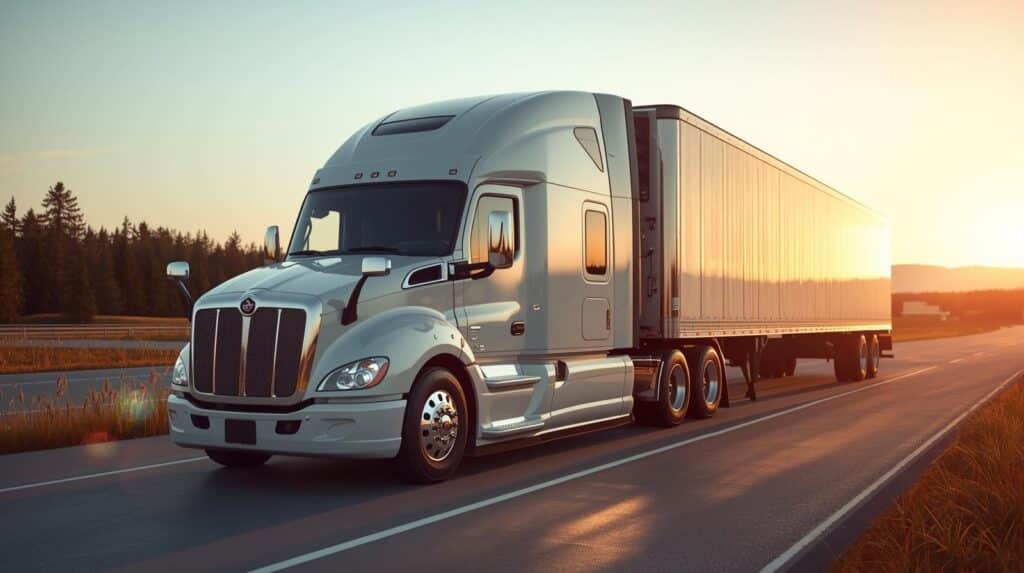Getting the keys to your own rig is a big milestone for any Canadian owner-operator or growing fleet. Used commercial truck financing in Canada lets you put a revenue-generating asset to work without the heavy depreciation that comes with brand-new models. The challenge is cutting through lender jargon, credit rules, and hidden fees. This guide gives you clear numbers, simple checklists, and step-by-step approval tactics—so you can choose the right loan or lease and get on the road with confidence.

Why a used truck can make financial sense
Used units avoid the steepest depreciation and lower the sticker price. That helps cash flow, especially when you’re building routes or switching carriers. Budget for maintenance from day one—tires, brakes, fluids, and any deferred repairs should sit in a monthly reserve.
Quick check: Does the payment still fit after fuel + insurance + maintenance? If not, increase your down payment, extend the term, or price your lanes higher.
Loan vs. lease: which fits your cash flow?
Equipment loan (own the asset)
- Fixed term (commonly 24–84 months, lender dependent).
- You own the truck at the end; the lender registers a lien.
- Interest and CCA may be deductible—confirm with your accountant.
- Good if you’ll keep the unit long-term or run high kilometres.
Lease (flexibility, lower upfront)
- Lower upfront cost and often easier approval.
- Watch kilometre/condition clauses and the buyout amount at term end.
- Good when cash is tight, you want predictable payments, or you plan to upgrade every few years.
Bundling extras
Need a trailer as well? Many programs can bundle truck and trailer financing when revenue supports the combined payment. Essential add-ons—ELD, APU, safety cameras, wet kit—are often covered under used truck and equipment financing if the payment still fits.
What you need to qualify (requirements & documentation)
Lenders assess three things: you, cash flow, and the truck. Bring a clean, complete package.
Document checklist
- Identity & banking: Government ID, void cheque, business bank account.
- Business proof: Registration/incorporation, GST/HST number, carrier agreement/broker letters or letters of intent.
- Financials: Last 3–6 months bank statements; recent tax returns/NOAs or T2s; a simple 12-month cash-flow forecast.
- Truck details: VIN, year, mileage/engine hours, recent inspection, lien search, bill of sale, photos.
- Insurance: Binder naming lender as loss payee.
- Down payment: Proof of funds or trade-in equity.
Tip: Lenders underwrite the specific unit. Pick the truck first, then apply.
Getting approved for commercial truck financing with bad credit
A low credit score doesn’t have to sideline your plans. While major banks may hesitate, many Canadian lenders specialize in owner-operators with challenging histories. Your job is to lower perceived risk.
How to strengthen your application:
- Bring a larger down payment (20–30%) to reduce lender risk and unlock better terms.
- Show consistent revenue with bank statements, broker letters, or carrier contracts.
- Add a co-signer (if available) to improve approval odds and rate.
- Work with specialist lenders that handle “bad credit” or “owner-operator” files and assess beyond a score.
- Present a clean unit: newer truck, solid inspection, and basic maintenance plan.
What to expect: Rates for bruised credit are often higher (commonly low-teens to around 20% depending on file strength). Treat this as a stepping stone—on-time payments rebuild your profile, and you can refinance later.
(Secondary intent covered: commercial truck leasing bad credit canada.)
Owner-operator financing: special considerations
“Commercial truck financing owner operator” files are judged on steady loads and lean fixed costs. Keep your payment, insurance, and plates manageable. If your lanes are locked with a stable carrier, a loan can build equity quickly. If you’re still testing markets, a lease can lower upfront cash and keep options open.
Taxes & ongoing costs to plan for
- GST/HST/PST on the purchase or lease payments (varies by province).
- Commercial insurance before funding.
- Maintenance reserve (set a fixed monthly amount).
- Licensing, IFTA, and safety compliance.
Down payment, rates, and terms you can expect
- Down payment: Plan for 10–30% on used equipment; more down improves approval odds and lowers payments.
- Terms: Many programs run 24–84 months, influenced by unit age, mileage, and credit profile.
- Prepayment rules: Ask for the policy and an amortization schedule in writing.
Sample numbers you can copy (illustrative math)
Truck price: $80,000
- Loan A: 20% down → finances $64,000 at 8% for 60 months → ~$1,298/month.
- Loan B: 20% down → finances $64,000 at 8% for 72 months → ~$1,122/month.
- Lease/Balloon example: 10% down → cap cost $72,000 with $20,000 residual at 8% for 60 months → ~$1,188/month, plus the $20,000 buyout if you keep the truck.
Use these to stress-test your cash flow. Your weekly net after fuel, insurance, and maintenance should comfortably exceed one quarter of the monthly payment.
Step-by-step: how to apply
- Pull your credit (Equifax/TransUnion) and fix errors.
- Pick the truck (VIN, inspection, history).
- Assemble documents (see checklist) and line up insurance.
- Compare 2–3 offers on total cost (rate + term + fees + buyout + prepayment rules).
- Sign and fund—confirm the timeline with the seller so delivery aligns with work commitments.
Mini case study (quick)
Dave, a first-time O/O in the GTA, targets local day-cab work. He chooses a clean $65,000 used unit, puts 20% down, and brings three signed lane letters from two brokers. He sets a $600/month maintenance reserve. With a complete file and steady work, he secures a fair 60-month payment and is on the road inside a week.
FAQs
Can I finance a used truck with bad credit in Canada?
Yes. Expect a higher down payment or newer collateral. Specialist lenders and leases can help; approvals move faster with a complete, clean package.
What credit score do I need for commercial truck financing?
There’s no single cutoff. Scores help, but steady revenue, time in business, unit condition, and down payment matter just as much to many lenders.
How much down payment do I need for a used commercial truck?
Plan for 10–30%. Larger down payments reduce risk for the lender and lower your monthly cost.
Is leasing better than buying for owner-operators?
Lease for lower upfront cash and predictable payments; loan to build equity and keep the unit long-term. Compare total cost, not just the rate.
How long does approval take?
Clean files with complete documents can be approved quickly; funding often follows once insurance and conditions are met.
Key takeaways:
- Match the payment to lane revenue after fuel, insurance, and maintenance.
- Bring a tight document package to speed approvals and improve terms.
- Choose loan vs lease based on cash flow and how long you’ll keep the unit.
- Bad-credit files improve with higher down, newer units, signed work, and clean inspections.
- Bundle truck, trailer, and essential equipment only if the combined payment still fits your budget.










1 thought on “Used Commercial Truck Financing in Canada: 2025 Guide for Owner-Operators”